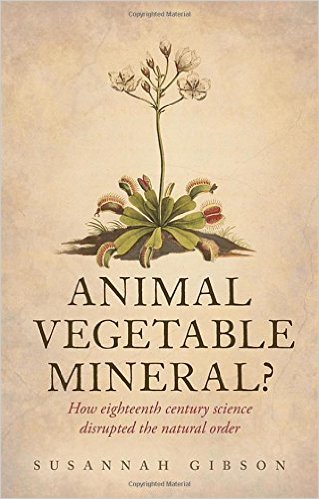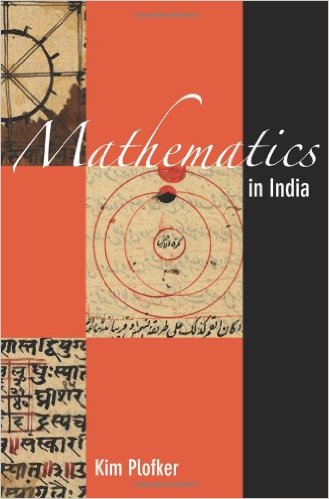The fourth century Alexandrian mathematician and philosopher Hypatia has become a feminist icon. She is probably the second most well known woman in #histSTM after Marie Curie. Unfortunately, down the centuries she has been presented more as a legend or a myth intended to fulfil the teller’s purposes rather than a real human being. As Alan Cameron puts it in his excellent essay, Hypatia: Life, Death, and Works:[1]
A pagan in the Christian city of Alexandria, she is one of those figures whose tragic death inspired a legend which could take almost any form because so few facts are known. As a pagan martyr, she has always been a stick to beat Christians with, a symbol in the continuing struggle between science and revealed religion. The memorable account in Gibbon begins wickedly “On a fatal day in the holy season of lent.” As a woman she can be seen as a feminist as well as a pagan martyr. Her name has been a feminist symbol down the centuries more recently a potent name in lesbian and gay circles. As an Egyptian, she has also been claimed as a black woman martyr. There is an asteroid named after her, a crater on the moon, and a journal of feminist studies. As early as 1886, the women of Wichita Kansas, familiar from the movies of our youth as a lawless western cattle town, formed a literary society called the Hypatia Club. Lake Hypatia in Alabama is a retreat for freethinkers and atheists. Rather less in tune with her scholarly activity, there is Hypatia Capital, a merchant bank whose strategy focuses on the top female executives in the Fortune 1000.
A few minutes’ googling will produce countless eulogies of Hypatia as a uniquely gifted philosopher, mathematician and scientist, the second female scientist after Marie Curie, the only woman in antiquity appointed to a university chair, a theorist who anticipated Copernicus with the heliocentric hypothesis. The 2009 movie Agora goes even further in this direction. A millennium before Kepler, Hypatia discovered that earth and its sister planets not only go round the sun but do so in ellipses, not circles. She remained unmarried, and could therefore be seen as a model of pagan virginity. Alternatively, since the monks are said to have killed her because of her influence on the prefect of Egypt, she could be seen as a slut. It is fascinating to observe how down the centuries she served as a lay figure for the prejudices of successive generations.
So what do we know about the real Hypatia? The answer is almost nothing. We know that she was the daughter of Theon (c.335–c.405) an Alexandrian mathematician and philosopher, most well known for his edition of The Elements of Euclid. We don’t know her birth date with estimates ranging from 350 to 370 CE. Absolutely nothing is known about her mother to whom no references whatsoever exist. It is assumed that she was educated by her father but once again, whilst highly plausible, no real evidence exists for this assumption. If we take a brief looked at the available sources for her biography the reason for all of this uncertainty becomes very clear.
The only source we have from somebody who actually knew Hypatia is Synesius of Cyrene (c.373–probably 413), who was one of her Christian students around 393 CE. In 410 CE he was appointed Bishop of Ptolemais. There was an edition of his letters, which contains seven letters to Hypatia and some to others that mention her. Unfortunately his letters tell us nothing about her death as he predeceased her. His last letter to her was written from his deathbed in 413 CE. Two of his letters, however, request her assistance for acquaintances in civil matters, which indicates that she exercised influence with the civil authorities.
Our second major source is Socrates of Constantinople (c.380–died after 439) a Christian church historian, who was a contemporary but who did not know her personally. He mention her and her death in his Historia Ecclesiastica:
There was a woman at Alexandria named Hypatia, daughter of the philosopher Theon, who made such attainments in literature and science, as to far surpass all the philosophers of her own time. Having succeeded to the school of Plato and Plotinus, she explained the principles of philosophy to her auditors, many of whom came from a distance to receive her instructions. On account of the self-possession and ease of manner which she had acquired in consequence of the cultivation of her mind, she not infrequently appeared in public in the presence of the magistrates. Neither did she feel abashed in going to an assembly of men. For all men on account of her extraordinary dignity and virtue admired her the more.
The third principle source is Damascius (c.458–after 538) a pagan philosopher, who studied in Alexandria but then moved to Athens where he succeeded his teacher Isidore of Alexandria (c.450–c.520) as head of the School of Athens. He mentions Hypatia in his Life of Isidore, which has in fact been lost but which survives as a fragment that has been reconstructed.
We also have the somewhat bizarre account of the Egyptian Coptic Bishop John of Nikiû (fl. 680–690):
And in those days there appeared in Alexandria a female philosopher, a pagan named Hypatia, and she was devoted at all times to magic, astrolabes and instruments of music, and she beguiled many people through her Satanic wiles. And the governor of the city honoured her exceedingly; for she had beguiled him through her magic. And he ceased attending church as had been his custom… And he not only did this, but he drew many believers to her, and he himself received the unbelievers at his house.
It is often claimed that she was head of The Neo-Platonic School of philosophy in Alexandria. This is simply false. There was no The Neo-Platonic School in Alexandria. She inherited the leadership of her father’s school, one of the prominent schools of mathematics and philosophy in Alexandria. She however taught a form of Neo-Platonic philosophy based mainly on Plotonius, whereas the predominant Neo-Platonic philosophy in Alexandria at the time was that of Iamblichus.
If we turn to her work we immediately have problems. There are no known texts that can be directly attributed to her. The Suda, a tenth-century Byzantine encyclopaedia of the ancient Mediterranean world list three mathematical works for her, which it states have all been lost. The Suda credits her with commentaries on the Conic Sections of the third-century BCE Apollonius of Perga, the “Astronomical Table” and the Arithemica of the second- and third-century CE Diophantus of Alexandria.
Alan Cameron, however, argues convincingly that she in fact edited the surviving text of Ptolemaeus’ Handy Tables, (the second item on the Suda list) normally attributed to her father Theon as well as a large part of the text of the Almagest her father used for his commentary. Only six of the thirteen books of Apollonius’ Conic Sections exist in Greek; historians argue that the additional four books that exist in Arabic are from Hypatia, a plausible assumption.
All of this means that she produced no original mathematics but like her father only edited texts and wrote commentaries. In the history of mathematics Theon is general dismissed as a minor figure, who is only important for preserving texts by major figures. If one is honest one has to pass the same judgement on his daughter.
Although the sources acknowledge Hypatia as an important and respected teacher of moral philosophy there are no known philosophical texts that can be attributed to her and no sources that mention any texts from her that might have been lost.
Of course the most well known episode concerning Hypatia is her brutal murder during Lent in 414 CE. There are various accounts of this event and the further from her death they are the more exaggerated and gruesome they become. A rational analysis of the reports allows the following plausible reconstruction of what took place.
An aggressive mob descended on Hypatia’s residence probably with the intention of intimidating rather than harming her. Unfortunately, they met her on the open street and things got out of hand. She was hauled from her carriage and dragged through to the streets to the Caesareum church on the Alexandrian waterfront. Here she was stripped and her body torn apart using roof tiles. Her remains were then taken to a place called Cinaron and burnt.
Viewed from a modern standpoint this bizarre sequence requires some historical comments. Apparently raging mobs and pitched battles between opposing mobs were a common feature on the streets of fourth-century Alexandria. Her murder also followed an established script for the symbolic purification of the city, which dates back to the third-century. There was even a case of a pagan statue of Separis being subjected to the same fate. There is actually academic literature on the use of street tiles in street warfare[2]. What is more puzzling is the motive for the attack.
The exact composition of the mob is not known beyond the fact that it was Christian. There is of course the possibility that she was attacked simply because she was a woman. However, she was not the only woman philosopher in Alexandria and she enjoyed a good reputation as a virtuous woman. It is also possible that she was attacked because she was a pagan. Once again there are some contradictory facts to this thesis. All of her known students were Christians and she had enjoyed good relations with Theophilus the Patriarch of Alexandria (384–412), who was responsible for establishing the Christian dominance in Alexandria. Theophilus was a mentor of Synesius. Also the Neoplatonic philosophy that she taught was not in conflict with the current Christian doctrine, as opposed to the Iamblichan Neoplatonism. The most probably motive was Hypatia’s perceived influence on Orestes (fl. 415) the Roman Prefect of Egypt who was involved in a major conflict with Cyril of Alexandria (c.376–444), Theophilis’ nephew and successor as Patriarch of Alexandria. This would make Hypatia collateral damage in modern American military jargon. In the end it was probably a combination of all three factors that led to Hypatia’s gruesome demise.
Hypatia’s murder has been exploited over the centuries by those wishing to bash the Catholic Church but also by those wishing to defend Cyril, who characterise her as an evil woman. Hypatia was an interesting fourth-century philosopher and mathematician, who deserves to acknowledged and remembered for herself and not for the images projected on her and her fate down the centuries.
There are two longer examinations of the Hypatia myths on the Internet, which deal with much more of the historical context of her life:
Tim O’Neill on History of Atheists: The Great Myths 9: Hypatia of Alexandria
Spencer Alexander McDaniel on Tales of Times Forgotten: Who Was Hypatia of Alexandria Really?
[1]Alan Cameron, Hypatia: Life, Death, and Works, in Wandering Poets and Other Essays on Late Greek Literature and Philosophy, OUP, 2016 pp. 185–203 Quote pp. 185–186
[2]You can read all of this in much more detail in Edward J. Watts’ biography of Hypatia, Hypatia: The Life and Legend of an Ancient Philosopher, OUP, 2017, which I recommend with some reservations.








































